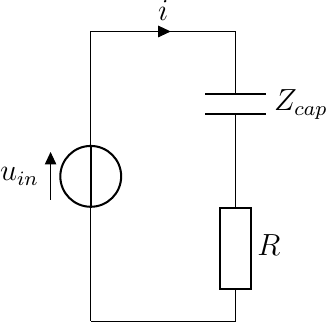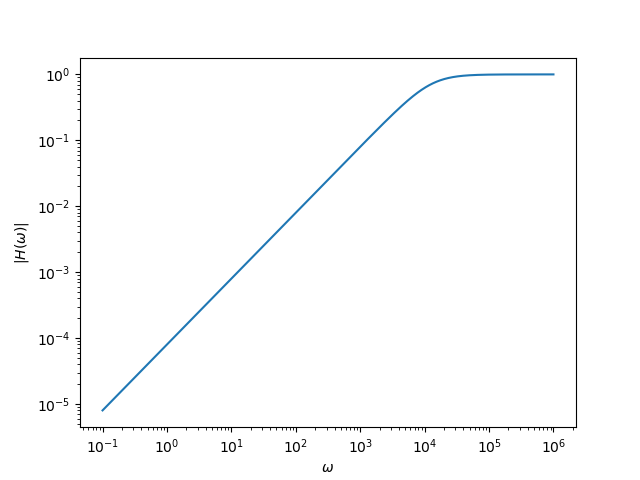5.2.10. High Pass Filter¶
As for the low pass filter we design a high pass filter using just one passive element, in this case a capacitor in series with the driver. In the schemematic below the speaker driver is represented with the resistor.

The transfer function in this case is:
\[H(\omega) = \frac{R}{R+\frac{1}{j\omega C}} = \frac{j\omega RC}{1+j\omega RC}\]
The bode plot for this system with \(R=8\Omega\) and \(C=10\mu F\) is given below. The cutoff frequency appears to be near 2 KHz.
Show code for figure
1import numpy as np
2import matplotlib.pyplot as plt
3
4plt.clf()
5
6R = 8
7C = 10E-6
8
9w = np.logspace(-1,6,num=1000)
10H = R / (R+1/(1j*w*C))
11
12plt.plot(w, abs(H))
13plt.xscale('log')
14plt.yscale('log')
15plt.xlabel(r'$\omega$')
16plt.ylabel(r'$|H(\omega)|$')
17plt.savefig('source/figures/bodeabsplothighpass.png')

Fig. 5.17 Bode plot of high pass filter.¶
Let’s do some quick and dirty analysis to see where the cutoff frequency is in terms of R and C. For low frequencies we have
\[H(\omega) \approx j\omega R C\]
and thus
\[\log | H(\omega)| = \log(RC) + \log(\omega)\]
and for large frequencies:
\[H(\omega) \approx 1\]
and thus
\[\log | H(\omega)| = 0\]
The cutoff frequency is thus at \(\omega_x = 1/(RC)\) and for this choice of resistor and capacitor \(f_x = \omega_x/(2\pi) = 1989 Hz\)